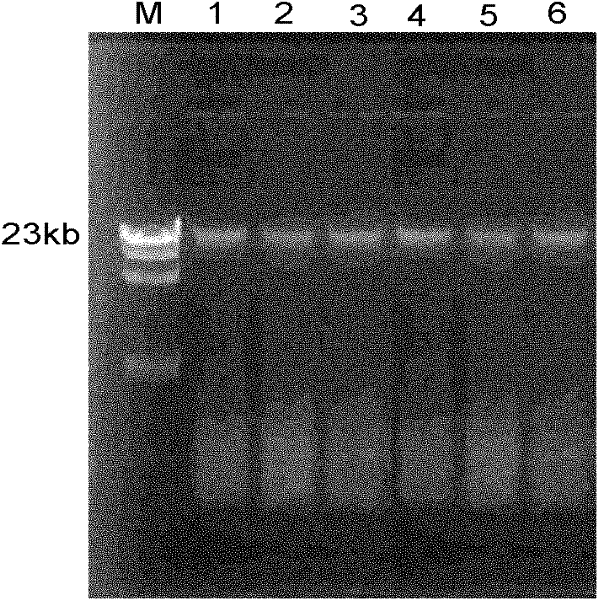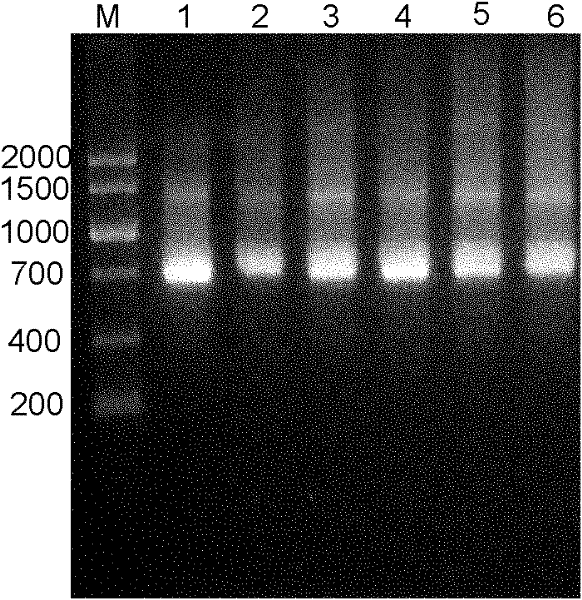Extraction and purification method of total plant endophyte genome DNA for colony analysis
A plant endophyte and purification method technology, applied in the field of extraction and purification of plant endophyte genome total DNA, to achieve high quality, high reliability, and low cost effects
- Summary
- Abstract
- Description
- Claims
- Application Information
AI Technical Summary
Problems solved by technology
Method used
Image
Examples
Embodiment
[0031] (1) Plant samples
[0032] The cadmium super-accumulative plant Solanum nigrum and the manganese super-accumulative plant pokeweed collected from the tailing dam of a mining area in Hunan Province were quickly brought back to the laboratory for storage at 4°C.
[0033] (2) Surface sterilization of fresh plant tissue
[0034] After cleaning the fresh plant tissue samples, soak them in 70% absolute ethanol and 2.5% sodium hypochlorite (adding a drop of Tween 80 per 100ml) for 40s and 10min, then rinse them with sterilized deionized water for 3 times, and use them for the last time. Sonicate for 2-5 minutes to ensure that there are no microbial cells on the surface of the plant tissue.
[0035] (3) Collection of microbial cells
[0036]Weigh 2g of the root, stem and leaf tissues of the two plants, cut them into 0.1-0.5cm pieces, put them in a mortar, grind them to a paste, rinse them with 25ml of sterilized phosphate buffer saline, and put them in a conical flask, add gl...
PUM
 Login to View More
Login to View More Abstract
Description
Claims
Application Information
 Login to View More
Login to View More - R&D
- Intellectual Property
- Life Sciences
- Materials
- Tech Scout
- Unparalleled Data Quality
- Higher Quality Content
- 60% Fewer Hallucinations
Browse by: Latest US Patents, China's latest patents, Technical Efficacy Thesaurus, Application Domain, Technology Topic, Popular Technical Reports.
© 2025 PatSnap. All rights reserved.Legal|Privacy policy|Modern Slavery Act Transparency Statement|Sitemap|About US| Contact US: help@patsnap.com



